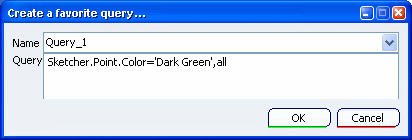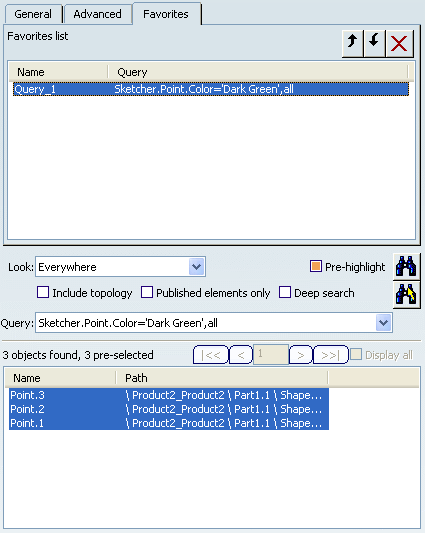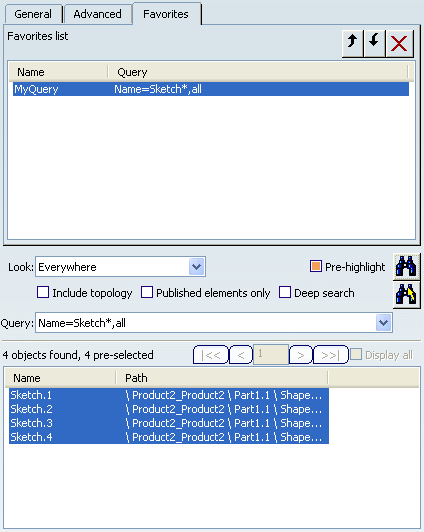Select (or press Ctrl+F).

In the Find dialog box, run a
quick search.
In our example, we enter the workbench
Sketcher in the
Workbench list and the type Point in the Type
list.
In the Color list, select From Element
from the list then select a line from the geometry area before clicking
the Find button.
In our example, we are searching for lines displayed in Dark
Grey Green color.
Click
the Add to favorites...
 button then click OK.
button then click OK.
The query is added to your favorites:

Close the Find dialog box then re-open it.
Select the Favorites tab.
Your query is displayed in the Favorites list:

Double-click the query to begin the search.
The scope option in the
Look list is automatically updated to match your search
criteria and the query is generated in the Query
box (the generated query is not editable and is displayed for information only):

Double-clicking a query in the Favorites mode automatically updates
the data displayed under the General tab accordingly and
the objects are preselected in the geometry area.
To modify the query syntax, click the text displayed in the Query column
then enter your new query, for instance:
NAME=Sketch*,all
To modify the query name, click the name displayed in the
Name column then enter
the new name, for instance:
MyQuery
Click the Find
 button:
button:

To modify the search scope, select the query syntax once
more then enter the new scope to be used, for instance:
(Name=Sketch*
& Color=Black),in
Click OK to exit search mode.